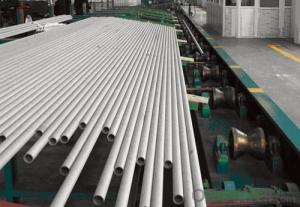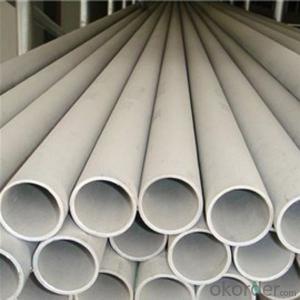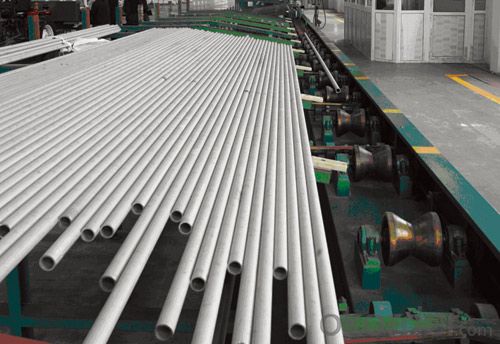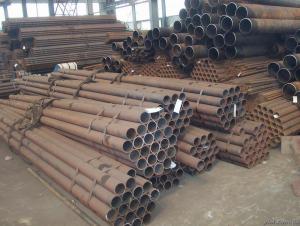Stainless Duplex seamless Steel Pipe 2507
- Loading Port:
- Ningbo
- Payment Terms:
- TT OR LC
- Min Order Qty:
- 1 m.t.
- Supply Capability:
- 5000 m.t./month
OKorder Service Pledge
OKorder Financial Service
You Might Also Like
1、Structure of Stainless Duplex seamless Steel Pipe 2507 Description:
Stainless steel pipe and tubing are used for a variety of reasons: to resist corrosion and oxidation, to resist high temperatures, for cleanliness and low maintenance costs, and to maintain the purity of materials which come In contact with stainless. The inherent characteristics of stainless steel permit the design of thin wall piping systems without fear of early failure due to corrosion.
2、Main Features of Stainless Duplex seamless Steel Pipe 2507:
• High manufacturing accuracy
• High strength
• Small inertia resistance
• Strong heat dissipation ability
• Good visual effect
•Reasonable price
3、Stainless Duplex seamless Steel Pipe 2507 Images:
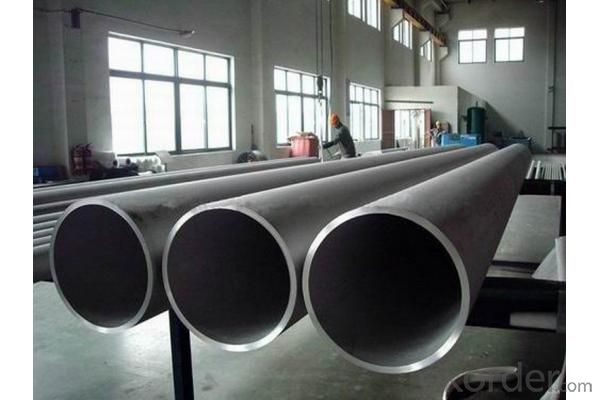
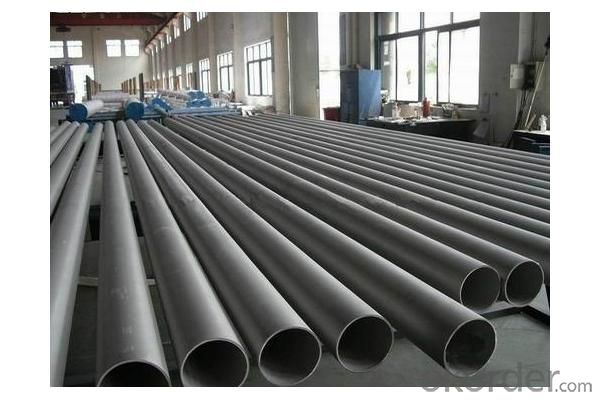
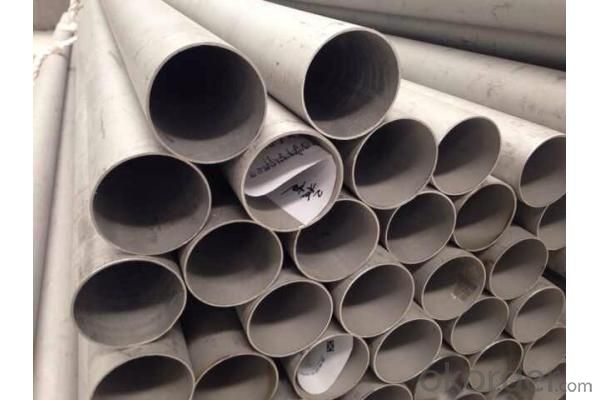
4、Stainless Duplex seamless Steel Pipe 2507 Specification:
Features:
Austenitic duplex Seamless Steel Pipe
Standard:S31803 S32304
Features:
2507 duplex Seamless Steel Pipe /tube
Standard:S31803 S32304
We export main products include Stainless Steel Pipe,seamless stainless steel pipe,welded
Stainless Steel Pipe and so on .
seamless duplex stainless Steel Pipe:
1) Type: austenitic.
2) Process method:cold drawn orcold roll with cold filtered.
3) Standard: S31803 S32304
4) Diameter: 2mm to 910mm.
5) Wall thinkness: 0.5mm to 45mm.
6) Applications: petrol-chemical project, food industry,heat exchanger,nuclear power
station,offshore platform,electric power industry and etc.
Outer packing
In bundles or seaworthy wooden cases.
5、FAQ of Stainless Duplex seamless Steel Pipe 2507:
①How is the quality of your products?
Our products are manufactured strictly according to national and internaional standard, and we take a test
on every pipe before delivered out. If you want see our quality certifications and all kinds of testing report, please just ask us for it.
Guaranteed: If products’ quality don’t accord to discription as we give or the promise before you place order, we promise 100% refund.
②How about price?
Yes, we are factory and be able to give you lowest price below market one, and we have a policy that “ for saving time and absolutely honest business attitude, we quote as lowest as possible for any customer, and discount can be given according to quantity”,if you like bargain and factory price is not low enough as you think, just don’t waste your time.Please trust the quotation we would give you, it is professional one.
③Why should you chose us?
Chose happens because of quality, then price, We can give you both.Additionally, we can also offer professional products inquiry, products knowledge train(for agents), smooth goods delivery, exellent customer solution proposals.Our service formula: good quality+good price+good service=customer’s trust
SGS test is available, customer inspection before shipping is welcome, third party inspection is no problem.
Any question, pls feel free to contact us !
- Q: Can stainless steel pipes be used for sewage applications?
- Indeed, sewage applications can utilize stainless steel pipes. Stainless steel, being an extremely robust and corrosion-resistant material, proves to be an impeccable selection for managing sewage and wastewater. It exhibits resistance against chemicals and other harsh elements frequently encountered in sewage systems, guaranteeing enduring performance and minimal upkeep. Moreover, the smooth interior surfaces of stainless steel pipes diminish the chances of congestion or blockages caused by debris or accumulation. All in all, stainless steel pipes present themselves as a dependable and sanitary choice for sewage applications.
- Q: What is the difference between 304H and 304 stainless steel pipes?
- The main difference between 304H and 304 stainless steel pipes lies in their carbon content. While both grades are variants of the 304 stainless steel alloy, 304H contains a higher carbon content compared to 304. This higher carbon content allows 304H to be used in higher temperature applications, as it provides improved high-temperature strength and resistance to sensitization. In contrast, 304 stainless steel pipes are more suitable for general-purpose applications, as they offer good corrosion resistance and are commonly used in a wide range of industries. Therefore, the choice between 304H and 304 stainless steel pipes depends on the specific requirements of the application, particularly the operating temperature and the need for enhanced strength and resistance to sensitization.
- Q: What is the difference between electropolished and mechanically polished stainless steel pipes?
- The main difference between electropolished and mechanically polished stainless steel pipes lies in the method used to achieve the desired surface finish. Electropolishing involves immersing the pipe in an electrolyte solution and applying an electric current, which removes a thin layer of metal and impurities, resulting in a smooth, clean, and corrosion-resistant surface. On the other hand, mechanical polishing involves abrasive materials, such as sandpaper or polishing wheels, to physically remove imperfections and create a smooth surface. Both methods can enhance the aesthetics and performance of stainless steel pipes, but electropolishing offers superior cleanliness, corrosion resistance, and a more uniform finish.
- Q: Are stainless steel pipes suitable for cryogenic applications?
- Stainless steel pipes are indeed suitable for cryogenic applications due to their exceptional low-temperature properties. This material proves to be an ideal choice when dealing with extremely cold temperatures in cryogenic applications. Its impressive strength, outstanding resistance to corrosion, and commendable thermal conductivity are all crucial factors when handling cryogenic fluids or gases. The structural integrity and durability of stainless steel pipes remain intact even under the harshest cold conditions, avoiding any brittleness. Moreover, the ability of stainless steel to resist expansion and contraction ensures consistent and dependable performance in cryogenic environments. Hence, it is no wonder that stainless steel pipes have gained popularity in various industries like aerospace, medical, and energy where cryogenic applications are commonly encountered.
- Q: Are stainless steel pipes suitable for petrochemical plants?
- Yes, stainless steel pipes are highly suitable for use in petrochemical plants. Petrochemical plants handle highly corrosive substances, extreme temperatures, and high pressure conditions, making it essential to use materials that can withstand such harsh environments. Stainless steel pipes offer excellent corrosion resistance, ensuring they can withstand the corrosive nature of petrochemicals without deteriorating or compromising the integrity of the pipes. Additionally, stainless steel has high temperature resistance, making it suitable for the extreme heat encountered in petrochemical processes. Stainless steel pipes also have excellent mechanical properties, providing strength and durability required for high-pressure applications in petrochemical plants. Moreover, stainless steel is a hygienic material that does not contaminate the substances being transported, making it ideal for maintaining the purity of petrochemicals. Overall, stainless steel pipes are a reliable and preferred choice for petrochemical plants due to their corrosion resistance, temperature resistance, mechanical properties, and hygienic nature.
- Q: Can stainless steel pipes be used for solar power systems?
- Yes, stainless steel pipes can be used for solar power systems. Stainless steel is a highly durable and corrosion-resistant material, making it a suitable choice for solar power system components. Stainless steel pipes can effectively handle the high temperatures and pressure requirements of solar thermal systems, which convert sunlight into heat energy. Additionally, stainless steel pipes are commonly used in photovoltaic (PV) systems, which convert sunlight directly into electricity. These pipes are utilized for mounting PV panels and providing structural support. Overall, stainless steel pipes are a reliable and long-lasting option for solar power systems.
- Q: What is the difference between 316 and 316L stainless steel pipes?
- The main difference between 316 and 316L stainless steel pipes is the carbon content. 316L has a lower carbon content, making it more resistant to corrosion and suitable for applications where welding is required. It also has a higher creep, stress-to-rupture, and tensile strength, making it a preferred choice in high-temperature environments.
- Q: What is the difference between seamless and double submerged arc welded stainless steel pipes?
- Seamless stainless steel pipes are produced by rolling a solid cylindrical billet of stainless steel after it has been pierced, ensuring a smooth surface without any welds or seams. This manufacturing process gives the pipes higher strength and corrosion resistance due to the absence of potential weak points created by welding. On the other hand, double submerged arc welded stainless steel pipes are made by aligning and welding two separate steel plates using a submerged arc welding process. This welding method uses a flux to protect the weld area from atmospheric contamination. The plates are then joined together to form a pipe by passing them through rollers. These pipes have a visible weld seam along their length. Seamless stainless steel pipes are preferred in applications where high pressure, high temperature, or corrosive environments are present. They eliminate the risk of leakage and enhance the overall structural integrity of the pipe. In contrast, double submerged arc welded stainless steel pipes are often chosen for their cost-effectiveness. They are less expensive to produce compared to seamless pipes and are commonly used in industries such as oil and gas, petrochemical, and water distribution. In conclusion, the main difference between seamless and double submerged arc welded stainless steel pipes lies in their manufacturing process and resulting characteristics. Seamless pipes have a smooth and continuous surface without any welds or seams, while double submerged arc welded pipes have a visible weld seam. The choice between these types of pipes depends on factors such as cost, application requirements, and the desired level of strength and corrosion resistance.
- Q: Why does the 304 stainless steel pipe leak?
- Chloride poisoning. Why chlorine is found in tap water is not explained here.
- Q: What is the difference between 446 and 316 stainless steel pipes?
- The main difference between 446 and 316 stainless steel pipes lies in their composition and properties. 446 stainless steel is a ferritic stainless steel that contains chromium, molybdenum, and a small amount of titanium. It offers excellent resistance to high-temperature oxidation, making it suitable for applications involving elevated temperatures. However, it may not be as resistant to corrosion as other stainless steel grades. On the other hand, 316 stainless steel is an austenitic stainless steel that contains chromium, nickel, and molybdenum. It is known for its superior corrosion resistance, making it ideal for applications in corrosive environments, such as marine or chemical industries. In summary, while 446 stainless steel is preferred for high-temperature applications due to its oxidation resistance, 316 stainless steel is chosen for its exceptional corrosion resistance in various environments.
Send your message to us
Stainless Duplex seamless Steel Pipe 2507
- Loading Port:
- Ningbo
- Payment Terms:
- TT OR LC
- Min Order Qty:
- 1 m.t.
- Supply Capability:
- 5000 m.t./month
OKorder Service Pledge
OKorder Financial Service
Similar products
Hot products
Hot Searches
Related keywords
